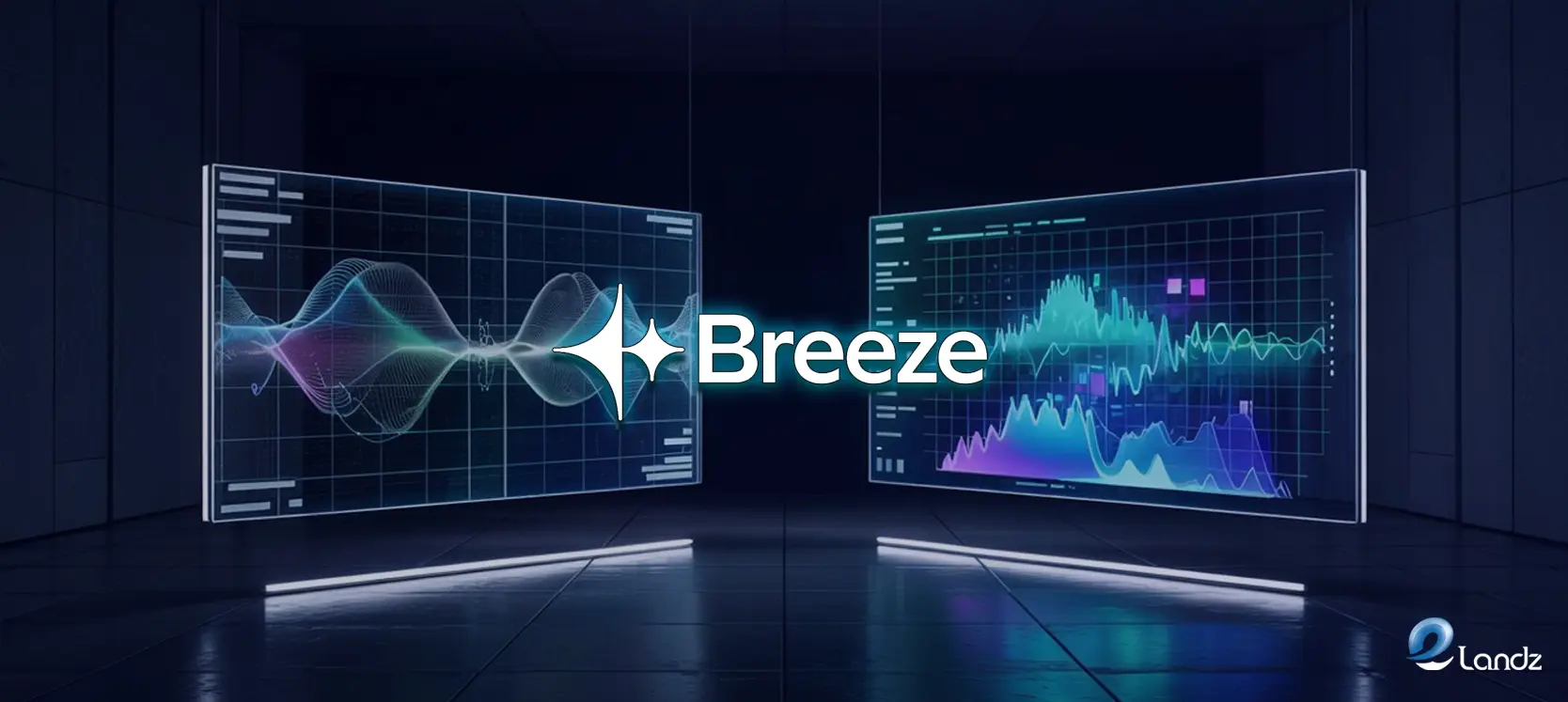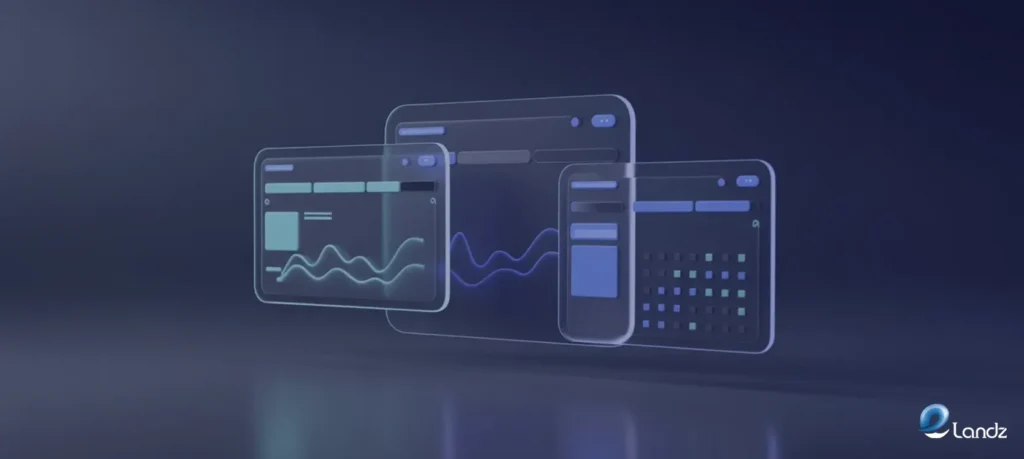
What Is Breeze AI and How Can It Transform Your Business?
15 Oct 2025Introduction
What is Breeze AI? It’s the question on every business leader’s mind as artificial intelligence reshapes the modern workplace. Teams that once spent hours on manual tasks now accomplish the same work in minutes. Customer interactions that felt generic have become personalized experiences. Data that sat unused in spreadsheets now drives strategic decisions.
Breeze AI is HubSpot’s comprehensive answer to harnessing AI’s power without overwhelming complexity. It is a suite designed to make intelligent automation accessible to every team. This guide explores how this platform can eliminate bottlenecks, accelerate growth, and unlock opportunities that previously seemed out of reach for businesses of all sizes.
Understanding Breeze AI
What is Breeze AI? It was built as an integrated intelligence layer within HubSpot’s CRM platform. Unlike standalone AI tools that require complex integrations, this solution works seamlessly with existing HubSpot data and workflows.
The architecture consists of three core components that work together. Breeze Copilot serves as an intelligent assistant for daily tasks. Breeze Agents function as specialized workers focused on specific business operations. Breeze Intelligence enriches CRM data through connections to external datasets. Together, these elements create a unified AI experience that enhances rather than replaces human capabilities.
What sets this platform apart is its deep integration with HubSpot’s ecosystem. Every conversation, contact record, and business metric becomes fuel for intelligent recommendations. Teams don’t need to learn new interfaces or export data to separate systems. The AI lives where work already happens.
How Breeze Copilot Streamlines Daily Operations

Breeze Copilot represents the evolution of HubSpot’s earlier ChatSpot tool. While ChatSpot introduced conversational AI for CRM queries, Copilot expands functionality across multiple dimensions. Think of it as having access to a knowledgeable assistant that understands your entire business context.
- The system handles data analysis by generating summaries of contact records, creating filtered lists based on specific criteria, and researching companies not yet in your database.
- When marketing teams need content, Copilot assists with drafting blog posts, email copy, and social media content.
- It can even generate images from text descriptions, streamlining creative workflows.
- Task automation becomes effortless through simple conversational commands.
- Creating new CRM records, building reports, preparing meeting agendas, and setting up workflows can all be accomplished through natural language prompts.
- The heavy lifting of administrative work gets reduced significantly.
Accessing Copilot requires just a click on its icon within HubSpot navigation. Users can choose from suggested prompts or browse the complete library. Common use cases include generating blog ideas, summarizing deals or companies, researching competitors, comparing performance metrics over time, and preparing for upcoming meetings.
The translation capability proves particularly valuable for global teams. Content can be adapted across languages while maintaining brand voice consistency. This functionality opens doors for businesses expanding into new markets.
Specialized AI Workers
The agent framework introduces four distinct specialists, each focused on particular business functions. These aren’t simple chatbots. They’re sophisticated systems trained on best practices and equipped with decision-making capabilities.
Your Marketing Strategist
Content creation consistently ranks among the most time-intensive marketing activities. The Content Agent addresses this challenge by assisting with planning, writing, and deploying various content types. The system leverages HubSpot’s brand voice feature, which captures personality and tone guidelines.
Once brand parameters are established, the agent can develop blogs, case studies, podcast outlines, and landing pages. Topic suggestions come from analyzing your business profile and industry trends. Wizard-style interfaces eliminate the need for complex prompt engineering.
While AI-generated content should never be published without human review, this tool accelerates the creation process dramatically. Marketing teams can produce more content in less time, maintaining consistent quality across channels.
Multi-Platform Management
Social media management becomes exponentially more complex when operating across multiple platforms. Each channel has different best practices, audience expectations, and optimal posting times. The Social Agent simplifies this complexity.
The system develops posts tailored for LinkedIn, Facebook, Instagram, and X (formerly Twitter) while maintaining brand voice consistency. Campaign suggestions are based on industry trends and historical performance data. Engagement predictions help prioritize which content deserves the most promotion.
Scheduling recommendations ensure posts go live when target audiences are most active. This optimization happens automatically, removing guesswork from content calendar planning.
Sales Efficiency Multiplier
Sales teams waste approximately half their time on unproductive prospecting activities. Researching companies, identifying decision-makers, and crafting initial outreach consumes hours that could be spent closing deals. The Prospecting Agent reclaims this lost time.
The system automatically evaluates which companies in your CRM match your ideal customer profile. Contact identification happens based on buyer behavior patterns, interaction history, and fit criteria. The agent can initiate outreach through personalized email drafts, create follow-up sequences, or fully automate engagement for qualified leads.
This automation allows sales representatives to focus energy on leads most likely to convert. Pipeline quality improves as low-probability prospects are filtered out early.
Always-On Support
Customer service teams often struggle with ticket volume, especially during staffing constraints. Simple inquiries consume time that could be spent resolving complex issues. The Customer Agent handles routine support requests automatically.
Conversation intelligence analyzes customer issues and determines appropriate responses based on your knowledge base content. Unlike rigid decision trees that frustrate users, this system provides flexible answers tailored to specific questions. Parameters can be set for escalating complex situations to human agents.
Resolution times decrease while customer satisfaction increases. Support teams operate more efficiently without increasing headcount.
Breeze Intelligence
Business decisions are only as good as the underlying data. Outdated contact information, incomplete company profiles, and missing buyer signals lead to missed opportunities. Breeze Intelligence solves these data quality challenges through three key features.
Data Enrichment at Scale
The Intelligence dataset contains over 200 million buyer and company profiles. When enabled, the system automatically fills gaps in your CRM records, adding more than 40 attributes to contacts and companies. This enriched information provides context for segmentation, personalization, and targeting.
Marketing campaigns become more sophisticated when detailed firmographic data is available. Sales outreach improves when representatives understand prospect challenges before the first call. The manual research burden disappears as information updates automatically.
Buyer Intent Monitoring
Identifying which companies are actively in-market for your solutions remains a persistent challenge. Website visits provide some signals, but context is often unclear. Breeze Intelligence’s buyer intent functionality highlights companies that fit your ideal customer profile while showing active interest.
The system monitors both existing CRM records and new visitors. Companies not yet in your database can be added through data enrichment. This proactive approach ensures no qualified leads slip through the cracks.
Form Optimization Through Smart Completion
Long forms create friction that reduces conversion rates. However, gathering sufficient information is necessary for effective lead qualification. Form shortening resolves this tension.
After a user enters their email address, Breeze automatically populates remaining fields with existing data. Progressive profiling happens seamlessly, collecting the most relevant information while minimizing user effort. Conversion rates increase as form abandonment decreases.
Intelligence features require credits since external data sources are accessed. While this represents an additional investment beyond base HubSpot subscriptions, the ROI comes from improved data quality and expanded targeting capabilities.
Real-World Applications Across Business Functions

Understanding features is important, but seeing how they apply to actual business challenges brings the value into focus. Breeze AI transforms operations across marketing, sales, service, and operations.
Marketing Transformation
Campaign personalization reaches new levels when enriched data informs targeting decisions. Audience segments become more precise, messaging resonates more effectively, and conversion rates improve. A/B testing and campaign optimization happen automatically, with the system learning which approaches perform best.
Lead forms shorten through auto-fill functionality, reducing prospect effort while maintaining data quality. The friction that typically exists between lead volume and lead quality gets resolved.
Content production accelerates without sacrificing consistency. Marketing teams can execute more ambitious strategies with existing resources. The Content Agent handles the heavy lifting while humans focus on strategy and refinement.
Sales Enablement
Prospecting becomes targeted rather than scattershot. Enriched activity tracking reveals buyer intent signals that indicate sales readiness. Warm leads are prioritized based on behavioral data, ensuring representatives focus effort where it matters most.
Email outreach becomes more effective when AI drafts personalized messaging based on prospect profiles and engagement history. Follow-up sequences are created automatically, ensuring consistent touch points without manual intervention.
Sales cycles shorten when representatives have complete information at their fingertips. Deal velocity increases as friction points are eliminated.
Customer Service Enhancement
Support agents receive AI-generated insights that accelerate issue resolution. Historical ticket data informs solution recommendations, reducing research time. Sentiment analysis monitors interaction quality, flagging situations that require immediate attention.
Chat agents powered by Breeze provide 24/7 service for routine inquiries. Customers receive immediate responses regardless of time zone or staffing levels. Complex issues are escalated to human agents with full context, eliminating the need for customers to repeat information.
Service quality improves while operational costs decrease. Teams handle higher ticket volumes without proportional staff increases.
Operational Efficiency Gains
Fragmented systems create silos that slow decision-making and complicate workflows. Breeze centralizes marketing and sales operations within a unified HubSpot framework. Data flows seamlessly between functions, eliminating manual handoffs.
CRM updates happen automatically as Intelligence enrichment runs continuously. Representatives spend less time on data entry and more time on strategic activities. Data visualization tools provide clarity, making performance trends immediately apparent to stakeholders.
Why Breeze AI Represents a Competitive Advantage
What is Breeze AI? Multiple factors combine to make this platform more than just another automation tool. The integration depth, scalability, and accuracy create distinct advantages for businesses that adopt it.
Workflow efficiency transforms when repetitive manual tasks are automated. Teams redirect energy toward strategic, high-value work that drives measurable results. Employee satisfaction often increases as tedious work is eliminated.
Scalability happens naturally as AI automations grow alongside business needs. Small teams operate with enterprise capabilities. Expanding operations don’t require proportional increases in headcount or technology investments.
Data accuracy improves dramatically through real-time enrichment. Incomplete records become comprehensive profiles. Guesswork gets replaced by informed decision-making backed by complete information.
Getting Started: Implementation Steps

Adopting new technology can feel overwhelming, but Breeze AI was designed for gradual implementation. A phased approach delivers quick wins while building toward comprehensive adoption.
Step One: Verify Platform Compatibility
Breeze AI requires specific HubSpot plan tiers. The first action is confirming your current subscription supports the AI suite. Upgrades are straightforward and provide immediate access to core features.
Step Two: Start Small with Single Agent
Rather than activating everything simultaneously, begin with one agent that addresses your most pressing challenge. The Social Media Agent might be ideal if content creation is a bottleneck. The Prospecting Agent could be perfect if sales efficiency needs improvement.
This focused start allows teams to experience AI benefits without change management complexity. Success with one agent builds confidence for broader adoption.
Step Three: Customize Workflows
One-size-fits-all solutions rarely deliver optimal results. Breeze AI offers extensive customization options that align with specific business goals. Workflow design should reflect unique processes and priorities.
Communications can be automated based on trigger events. Repetitive tasks are eliminated through smart rules. The system works according to your specifications rather than forcing adaptation to rigid frameworks.
Step Four: Monitor and Optimize
Implementation is just the beginning. Regular performance monitoring reveals what’s working and identifies optimization opportunities. Breeze provides detailed analytics showing how each component contributes to business outcomes.
Settings can be adjusted as needs evolve. Workflows are refined based on real-world results. The platform learns from usage patterns, becoming more effective over time. ROI increases as optimization continues.
Security and Compliance Considerations
Data security concerns are legitimate when adopting AI tools. Breeze AI was built with enterprise-grade protections and compliance standards.
The platform adheres to GDPR requirements, ensuring data handling meets European privacy regulations. SOC 2 compliance demonstrates commitment to security controls and customer data protection. These certifications provide assurance that sensitive information is handled appropriately.
Access controls allow administrators to define who can use specific features. Audit logs track system usage, providing transparency into how AI tools are being leveraged. Data residency options accommodate businesses with geographic storage requirements.
Investment and Pricing Structure
Cost considerations influence technology adoption decisions. Breeze AI operates on a tiered pricing model that scales with usage needs.
Starter plans begin at $30 monthly for 100 Intelligence credits. These credits are consumed when data enrichment or external lookups occur. Higher tiers offer increased credit allotments and additional features.
The investment should be evaluated against efficiency gains and revenue impact. Time saved on manual tasks translates to cost reduction. Improved conversion rates drive revenue growth. Most organizations find ROI positive within the first few months.
The Future of AI-Enhanced Business Operations
HubSpot’s vision extends beyond current Breeze AI capabilities. At Inbound ’24, co-founder Dharmesh Shah introduced Agent.ai, described as the first professional network for AI agents.
This marketplace allows users to discover specialized agents created by the community. Website conversion optimization, competitive analysis, and company research agents already exist. Users can create custom agents or modify existing ones to meet specific needs.
The Agent Builder includes an Agent User Interface (AUI) that enables different agents to collaborate. This interconnection creates possibilities for complex, multi-step workflows executed entirely by AI.
Routine tasks are handled automatically, freeing humans for creative problem-solving and relationship building. Are you still wondering, “What is Breeze AI?” We can help.
FAQs
Check out this FAQ section!
Does Breeze AI integrate with tools outside the HubSpot ecosystem?
Breeze AI is designed to work within HubSpot’s platform, leveraging CRM data and native tools. While it doesn’t directly integrate with external systems, HubSpot itself offers numerous integrations with popular business tools. Data synced into HubSpot becomes accessible to Breeze AI for analysis and automation.
How quickly can results be expected after implementing Breeze AI?
Implementation timelines vary based on use cases and organizational readiness. Some benefits appear immediately. Agents typically deliver measurable results within weeks as they’re trained on your data. Full optimization usually occurs over 2-3 months as workflows are refined.
What happens to existing HubSpot workflows when Breeze AI is activated?
Current workflows continue functioning normally. Breeze AI enhances rather than replaces existing automation. Organizations can gradually transition processes to AI-powered versions or maintain hybrid approaches. The system is designed to complement existing investments rather than requiring complete rebuilds.
Can Breeze AI be used by businesses without dedicated IT resources?
Yes, Breeze AI was specifically built for business users rather than technical specialists. The conversational interface and pre-built agents require no coding knowledge. HubSpot provides comprehensive support documentation and onboarding assistance. Many organizations successfully implement without IT involvement, though technical resources can optimize advanced configurations.
How does Breeze AI handle industry-specific terminology and unique business contexts?
The system learns from your HubSpot data, including all historical conversations, deal notes, and content. This exposure helps it understand industry language and company-specific terminology. The brand voice feature allows explicit training on communication preferences. Over time, responses become increasingly aligned with your unique business context as the AI processes more interactions.


